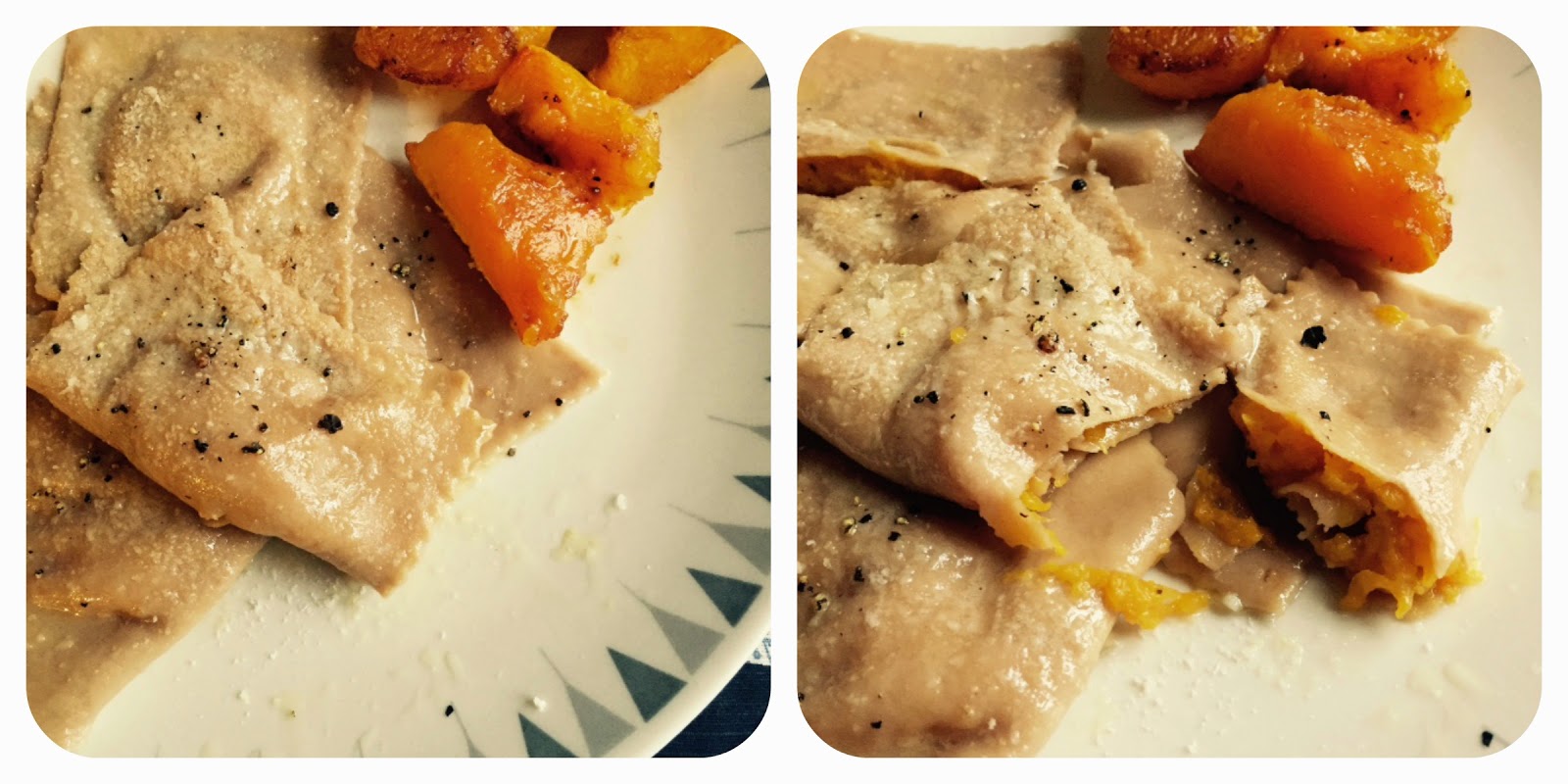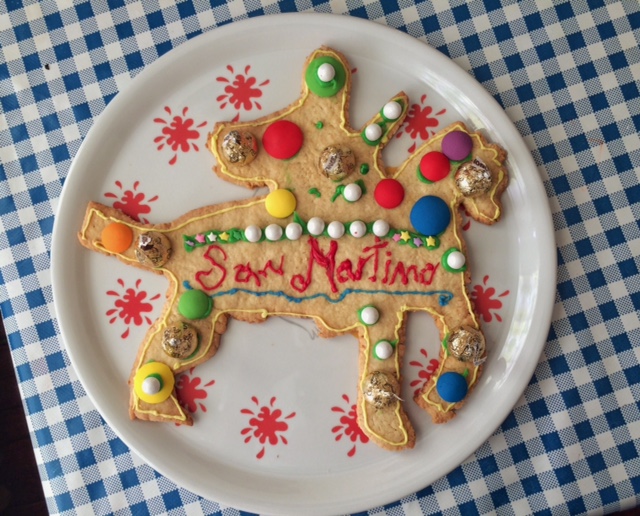I had to give up on the best pumpkin in the world, but I wasn't giving up on my ravioli vision.
So I immediately drove back to my farmer's market and purchased another pumpkin. This time, I chose a Long Island Cheese Pumpkin, because if I couldn't have the best, then I wanted another with a similarly evocative name. The Cheese Pumpkin didn't disappoint—well, it did disappoint in not tasting like actual cheese, but I knew the name was due to its shape—it is a more velvety and sweet version of a butternut squash, and decidedly more delicious.
While the pumpkin was roasting in the oven, I worked on the chestnut-flour pasta dough, and then rolled it out, stretched it, filled it, and cut it despite the slightly unnerving attentions of my very defiant and mechanically-obsessed Minibee (the oldest).
 |
| The pasta cutter in the last pic belonged to my maternal grandma. It's my amulet. |
I'm happy to report, the final ravioli were a total delight, sweet and creamy and absolutely perfect for fall. We served them topped with melted butter, grated Parmigiano, and a little black pepper, and added some leftover cheese pumpkin cubes aside. It took a whole afternoon with the constant sabotaging by my kids, but when there's a pot of buttery ravioli at the end of the parenting tunnel, nothing can stop me.
PUMPKIN RAVIOLI
(MADE WITH CHESTNUT FLOUR)
for the filling:
2C roasted pumpkin (with EVOO and kosher salt)
1/2C grated Parmigiano Reggiano
freshly ground black pepper
for the pasta:
1C chestnut flour
1C unbleached all-purpose flour
a pinch of salt
1 tbsp EVOO
2 eggs
1 egg white (for sealing the ravioli)
finish:
2 tbsp unsalted butter
1/4C grated Parmigiano
freshly ground black pepper
MAKE THE FILLING
- Peel and cut your pumpkin in small pieces. Drizzle with oil, sprinkle with salt and roast in a 375F oven until fork tender. Let cool.
- Mash the pumpkin with a potato masher if you like to keep some of the original texture (and heartiness), otherwise, puree until smooth in a food processor.
- Stir in the Parmigiano and the pepper.
MAKE THE PASTA DOUGH
- Mix the two flours in a bowl and stir in the salt and EVOO.
- Add the two eggs and mix first with a fork and then, when the dough starts to come together, with your hands, until you obtain a compact, elastic dough that is not sticky. If the dough is still dry and crumbly, sprinkle with water until you reach the desired consistency.
- Cover and let rest of 30 minutes.
MAKE THE RAVIOLI
- Roll out the dough with a rolling pin or with a pasta machine until very thin. If you never used a pasta machine before but want to start now, check out these instructions.
- My ravioli were 3X3'', because I wanted to have a little filling in the center and some room for the pasta itself to breathe (you get to enjoy the chestnut flavor more). If you want the same, cut the pasta in 3'' wide strips and place a heaping teaspoon of filling every 3''.
- Brush with egg white (mixed with a couple tablespoons of water) along the edges and in between the filling heaps.
- Place another strip of pasta on top and cut the edges of each piece with a pasta cutter.
- Place the finished ravioli on a floured kitchen towel and sprinkle with flour.
COOK&SERVE
- Melt butter in a nonstick pan.
- Cook the ravioli in gently boiling water for 2–3 minutes. Be delicate: they are.
- Serve the ravioli, about 5 per portion, topped with melted butter, black pepper, and Parmigiano.




